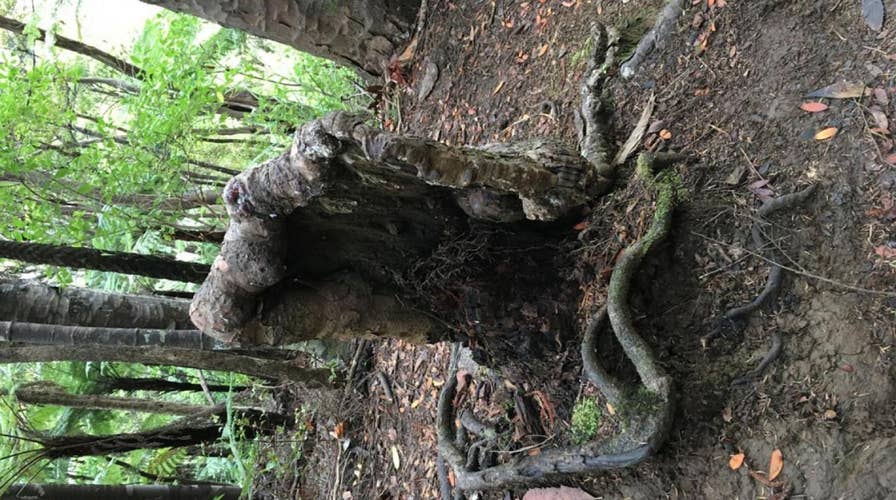Strange ‘superorganism’ is keeping a ‘vampire’ tree alive
A strange ‘superorganism’ is keeping this ‘vampire’ tree in New Zealand alive.
It sounds like something straight out of "Stranger Things," but a forest "superorganism" is keeping a nearly-dead tree stump alive.
The stump of a kauri tree in New Zealand is still alive thanks to a network of intertwined roots that share resources, researchers have found, a network described as a forest "superorganism."
"My colleague Martin Bader and I stumbled upon this kauri tree stump while we were hiking in West Auckland," said one of the study's authors, Sebastian Leuzinger, in a statement. "It was odd, because even though the stump didn't have any foliage, it was alive."

This image shows the Kauri tree stump in the study. (Credit: Sebastian Leuzinger / iScience)
DEADLY FUNGUS CREATES 'ZOMBIE ANT'S AND HIJACKS THEIR JAWS TO CAUSE SUICIDE
"For the stump, the advantages are obvious — it would be dead without the grafts, because it doesn't have any green tissue of its own," Leuzinger added. "But why would the green trees keep their grandpa tree alive on the forest floor while it doesn't seem to provide anything for its host trees?"
Kauri trees can grow as high as 165 feet, Live Science reports.
Leuzinger, along with Bader, looked at the flow of nutrients of the stump and its neighbors and found that they drank water at different times.
"Its stem water potential showed strong diel variation with minima during daytime and maxima at night, coinciding with peak and minimal sap flow rates in neighbors, respectively," the study's abstract reads. "Sudden atmospherically driven changes in water relations in adjacent kauri trees were very rapidly and inversely mirrored in the living stump's water status. Such intimate hydrological coupling suggests a 'communal physiology' among (conspecific) trees with far-reaching implications for our understanding of forest functioning, particularly under water shortage."
"This is different from how normal trees operate, where the water flow is driven by the water potential of the atmosphere," Leuzinger said in the statement. "In this case, the stump has to follow what the rest of the trees do, because since it lacks transpiring leaves, it escapes the atmospheric pull."
Although it's unclear why the nearly dead tree has been kept alive by the surrounding kauri trees, the researchers offered one possible explanation: its roots may still have value as a kind of bridge. This would allow the other trees "to access more resources such as water and nutrients, as well as increase the stability of the trees on the steep forest slope."
"This has far-reaching consequences for our perception of trees — possibly we are not really dealing with trees as individuals, but with the forest as a superorganism," Leuzinger noted.
The research has been published in the scientific journal iScience.

